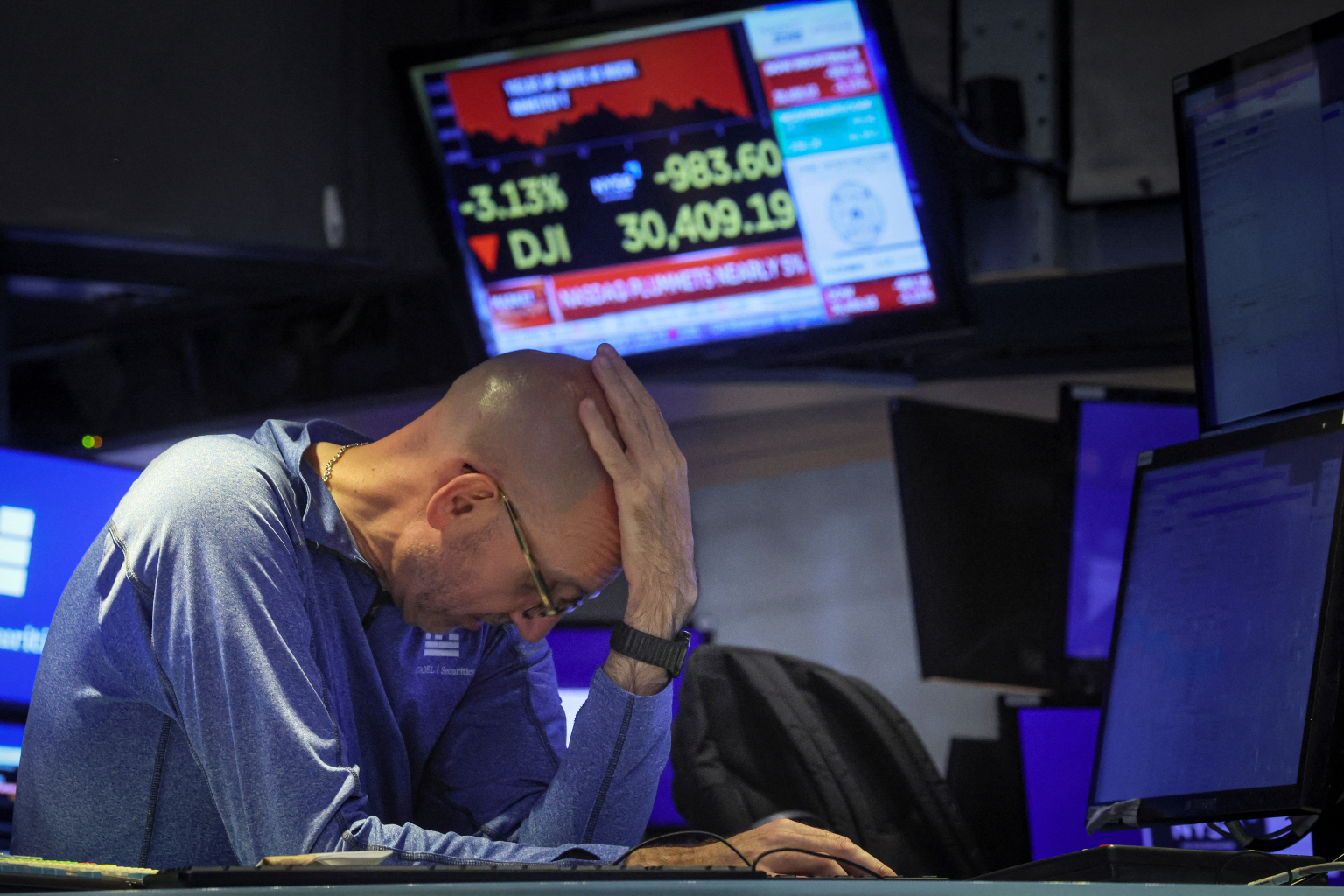US stocks plunge into bear market as recession worries grow
Sign up now: Get ST's newsletters delivered to your inbox

It was Wall Street's fourth straight day of losses and comes ahead of Wednesday's Fed decision.
PHOTO: REUTERS
Follow topic:
NEW YORK (REUTERS) - US stocks tumbled on Monday (June 13), with the S&P 500 confirming it is in a bear market, heightening fears that the expected aggressive interest rate hikes by the Federal Reserve could push the economy into a recession.
A close of more than 20 per cent below the record high confirms that the index is in a bear market, according to a commonly used definition. It is the first time the S&P 500 has confirmed a bear market since the 2020 Wall Street plunge brought on by the Covid-19 pandemic.
Stocks have been volatile since the start of the year, with Russia’s invasion of Ukraine in late February taking a heavy toll on markets.
But increasing worries about inflation and the United States central bank’s monetary policy tightening as it attempts to quell it have fuelled much of the recent sell-off.
The S&P 500 closed Monday at 3,749.63, down 3.9 per cent on the day and 21.8 per cent below its Jan 3 record closing high of 4,796.56. The Dow Jones Industrial Average fell 876.05 points, or 2.79 per cent, to 30,516.74, while the Nasdaq Composite dropped 530.80 points, or 4.68 per cent, to 10,809.23.
The indexes on Friday posted their biggest weekly percentage declines since January and ended sharply lower after a report showed a steeper-than-expected rise in US consumer prices in May.
“My view is that we will not really see a turnaround for the stock market until we see some kind of pivot from the Fed. And by that, I mean getting a little less aggressive, which I know is going to take time because right now, the trajectory is to get more aggressive,” said Ms Kristina Hooper, chief global market strategist at Invesco in New York.
“The silver lining in all of this is that the more pessimism that abounds, the more potential there is for upside,” Ms Hooper added.
The Fed is expected to hike interest rates by 50 basis points when it concludes its two-day meeting on Wednesday, and expectations for a hike of 75 basis points at the June meeting have jumped to nearly 30 per cent from 3.1 per cent a week ago, according to CME’s Fedwatch Tool.
One worry is that an aggressive push higher on rates by the Fed could send the economy into recession.
The yield on the two-year US Treasury note, a benchmark for borrowing costs, briefly rose above the 10-year yield on Monday. Many in the markets see this as a reliable signal that a recession could come in the next year or two.
This year’s downturn is a pivotal shift for the market after its swift and strong post-pandemic rally. The S&P 500 rose 114.38 per cent from its closing low on March 23, 2020, to its Jan 3 record closing high this year.
“The reason why the market is not bottoming, we think, is because there still remains a ton of uncertainty. And because of that, it is likely that it is going to be extremely choppy here,” said chief investment strategist King Lip of Baker Avenue Asset Management.
Cryptocurrency- and blockchain-related stocks, including Riot Blockchain, Marathon Digital Holdings and Coinbase Global, all plunged as Bitcoin slumped more than 10 per cent after major US cryptocurrency-lending company Celsius Network froze withdrawals and transfers, citing “extreme” conditions.
The Nasdaq earlier this year confirmed that it was in bear market territory, the first of the three major US indexes to hit such levels.
The longest S&P 500 bear market lasted just over five years, starting on March 6, 1937, and ending on April 29, 1942, while the shortest lasted just over a month, beginning on Feb 19, 2020, and ending on March 23 that year, according to S&P Dow Jones Indices.
It has taken a little over a year on average for the index to reach its bottom during bear markets, and then roughly another two years to return to its prior high, according to CFRA Research.

